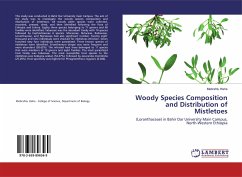The Asiatic black bear (Ursus thibetanus) commonly known in Nepal as "Himali kalo bhalu" is a solitary, crepuscular mammal belonging to Ursedae family. The elevation variation of Nepal provides habitat for three species of bears; sloth bear, Asiatic black bear, Tibetan brown bear. Asiatic black bear (Ursus thibetanus) live in the Middle hills region up to tree line. The study was carried out in Panchase Protected Forest of Nepal. The main aim of the study entitled "Species identification and diet analysis of asiatic black bear (Ursus thibetanus) in panchase protected forest, Nepal" was to identify species of bear and its diet composition in study area. 7 VDCs were selected for the censored sampling for local people interview (n=51) who were the key persons about the study area. Opportunistic survey was carried out to take signs of bear, was analyzed on the basis of presence of signs and interviews. Feeding signs were found more in Jaljala, Aahaldanda, Bhalupahara, Sidda Baba Mandir, and Chisapani areas of the PPF area. Hair analysis was done from microphotographs. Scat analysis was done by micro-histological analysis in IOF laboratory.








